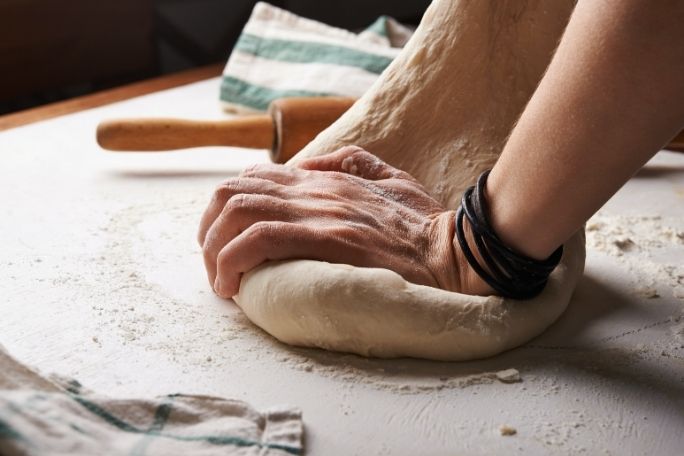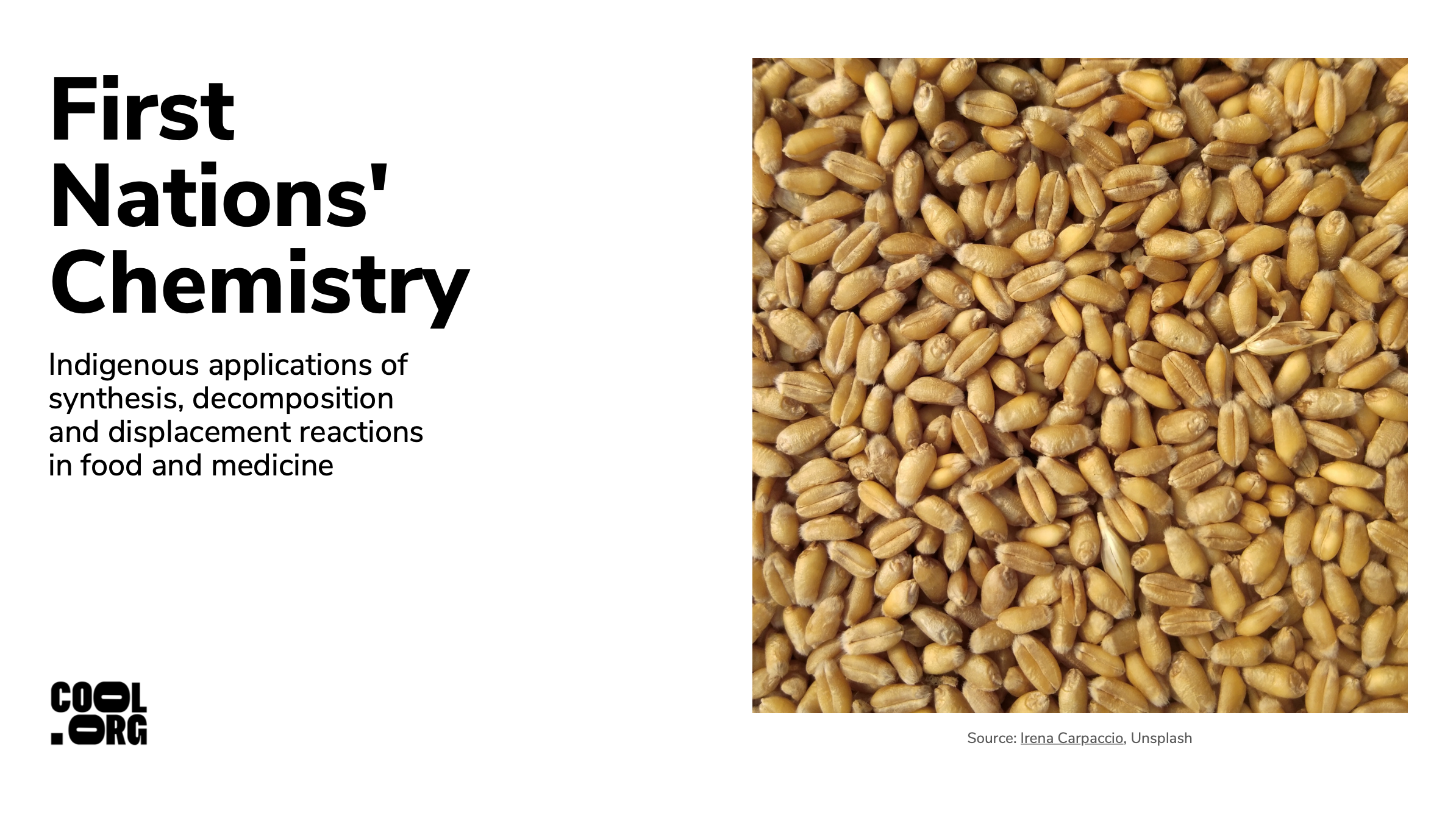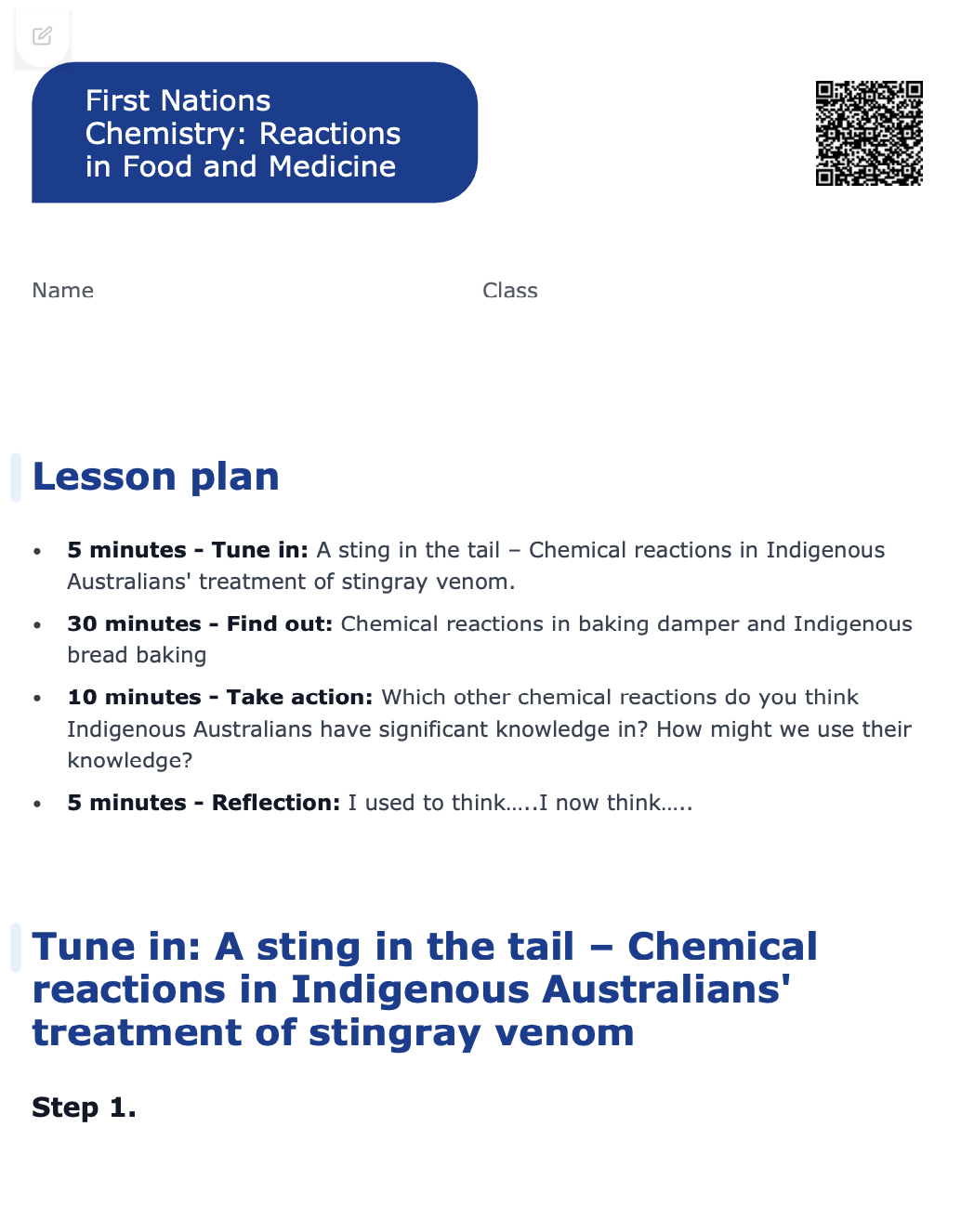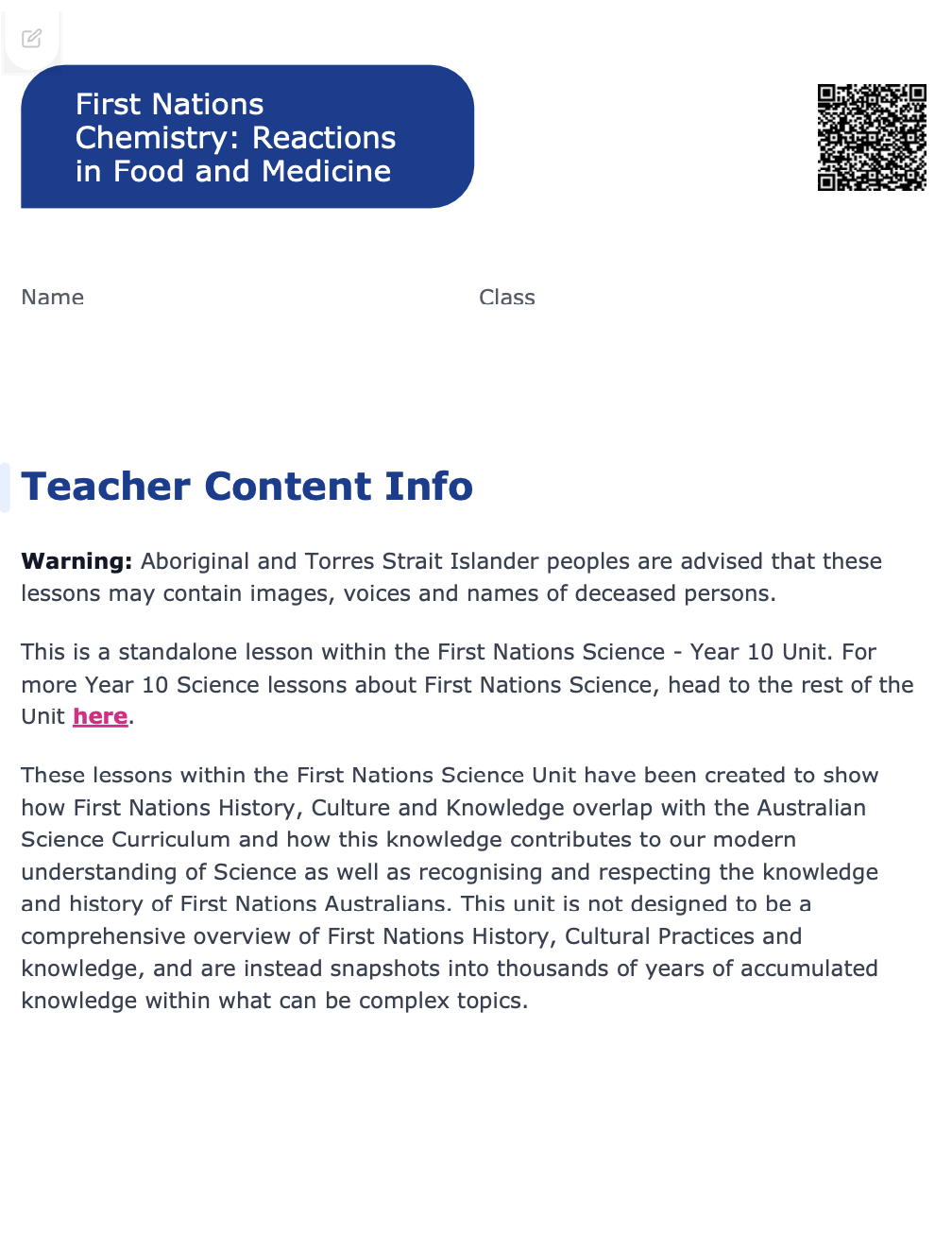Lesson summary
Exploring Western Sciences' understanding of Chemistry, including identifying synthesis, decomposition and displacement reaction patterns through investigating how First Nations cultures have observed and adapted chemical reactions for millennia.
Learning intentions:
Students will...
- explore reactions utilised by First Nations peoples in medicine and cooking and identify patterns in synthesis, decomposition and displacement reactions.
Success criteria:
Students can...
- identify types of reactions as synthesis, decomposition and displacement based on their reactants and products
- describe types of reactions employed by First Nations Australians in the baking of bread.
Lesson guides and printables
Curriculum links
Select your curriculum from the options below.
Lesson details
Curriculum Mapping
Australian Curriculum (v9.0) content descriptions - Science
Students learn to:
- identify patterns in synthesis, decomposition and displacement reactions and investigate the factors that affect reaction rates (AC9S10U07)
General capabilities: Literacy, Critical and Creative Thinking, Intercultural Understanding
Syllabus outcomes: SC5-17CW
Cross-curriculum priority: Aboriginal and Torres Strait Islander Histories and Cultures.
Relevant parts of Year 10 achievement standards:
Students can explain patterns and trends in the periodic table and predict the products of reactions and the effect of changing reactants and reaction conditions.
Resources Required
- Computer
- Projector
- Slide deck showing images from the lesson
Skills
This lesson is designed to build students’ competencies in the following skills:
- collaboration
- critical thinking
- curiosity
- adaptability
- intercultural understanding
- creativity
- communication
- reflection.
Additional Info
Warning: Aboriginal and Torres Strait Islander peoples are advised that these lessons may contain images, voices and names of deceased persons.
Level of teacher scaffolding: Medium - facilitation of class discussion; review of pre-existing knowledge.
This is an original Cool+ lesson.





Welcome back!
Don't have an account yet?
Log in with:
Create your free Cool.org account.
Many of our resources are free, with an option to upgrade to Cool+ for premium content.
Already have an account?
Sign up with:
By signing up you accept Cool.org's Terms and Conditions(Opens in new tab) and Privacy Policy(Opens in new tab).